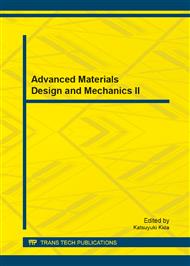p.325
p.331
p.336
p.340
p.346
p.350
p.354
p.360
p.364
Rule-Based Mamdani-Type Fuzzy Modeling of Heating and Cooling Performances of Counter Flow Ranque-Hilsch Vortex Tubes with Different Geometric Construction for Brass
Abstract:
In this study, thermal performances of counter flow Ranque-Hilsch vortex tubes were experimentally investigated and modeled with a Rule Based Mamdani-Type Fuzzy (RBMTF) modeling technique. The vortex tubes were made of brass. Diameter of vortex tube (D) was 10 mm. Length of vortex tube (L) was 10D, 11D, 12D, 13D, 14D. Input parameters (ξ, L/D) and output parameters (ΔTh, ΔTc) were described by RBMTF if-then rules. 45 experimental data sets were used in the training step. R2 for the ΔTh was found to be 99.42 % and R2 for the ΔTc was 99.66 %. The actual values and RBMTF results demonstrated that RBMTF can be successfully used for the determination of heating and cooling performances of counter flow RHVT with different geometric constructions for brass.
Info:
Periodical:
Pages:
346-349
Citation:
Online since:
August 2013
Authors:
Keywords:
Price:
Сopyright:
© 2013 Trans Tech Publications Ltd. All Rights Reserved
Share:
Citation:


